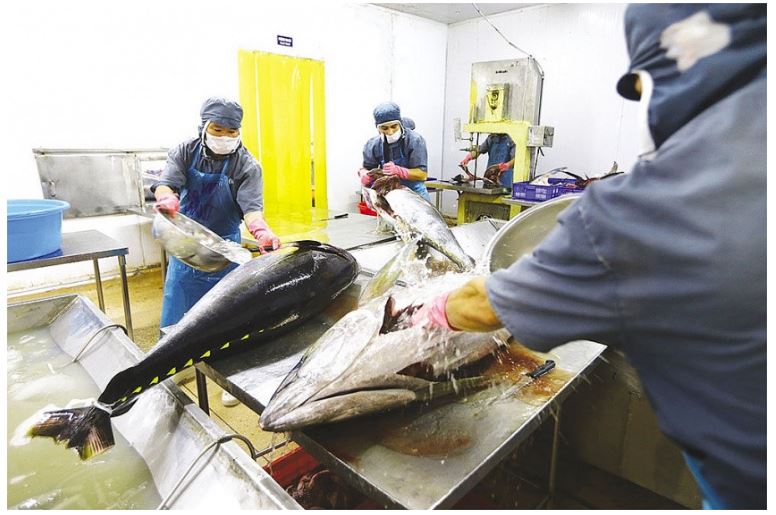Vietnam’s seafood exporters suffering with euro fluctuation
Following exchange fluctuations, Vietnamese seafood exporters are now faced with catastrophic changes in their orders, forcing them to lower export prices or find other solutions to stay competitive in the long run.
For the second time in just over a month, the euro dropped to parity with the US dollar on August 22, when the price of the former fell to a 5-week low against the latter.
On July 12, the two coins were priced at the same price for the first time in 20 years. The euro has depreciated sharply since the beginning of February when each euro was still worth $1.13. As the euro falls, so grow concerns among Vietnamese seafood exporters.
Vo Van Phuc, general director of Vietnam Clean Seafood Corporation, said, “The risk of exchange rate loss is real as businesses pay in euros and then change to VND to buy raw materials.”
However, not all seafood exporters are affected by the exchange rate. Kim Thu, an analyst at the Vietnam Association of Seafood Exporters and Producers (VASEP), said that seafood export transactions in US dollars were not affected too much.
“The impact from the exchange rate stagnates. In July, seafood exports to Europe maintained a revenue growth rate of 28 per cent and in seven months accumulated $829 million, up 39 per cent over the same period last year,” Thu said.
“But profits have dropped to low levels, possibly because buyers have reduced demand for Vietnamese seafood. Demand could also be weaker when the local currency weakens and imported goods become more expensive. Then, European consumers will consider choosing essential items at affordable prices.”
Dutch multinational Rabobank in its Global Aquaculture Update H1/2022 – which it subtitled On the Brink of Recession – predicted that the demand for seafood will decline in the second half of 2022 amid rising costs for feed, freight, and energy.
According to the report, signs of recession have already begun in both the EU and the Unied States, which are recovering from the pandemic and this would lead to reduced food demand. According to VASEP, the increase in inventories along with inflation has affected the import demand of the US since June, causing Vietnam’s seafood exports to this market to decrease by 8 per cent in that month and another, even heavier, decline of 23 per cent in July.
Accumulated in the first seven months, the export value to the US reached nearly $1.5 billion, up 31 per cent over the same period last year.
Le Hang, analyst and communications director of VASEP, commented, “The increase in inventories causes importers to limit purchases and find ways to lower import prices. The current export price cannot maintain the high level as in the first half of the year.”
According to Hang, inflation is causing people in European countries to reduce consumption. Many importers would have said that they will likely not receive orders until the end of October. Hang also confirmed that some buyers are trying to push additional storage costs onto Vietnamese enterprises.
Some businesses are heading to Japan, and the market has a high level of stability, but this country is also adjusting prices by about 20 per cent to offset inflation. Purchasing power fell sharply because Japanese consumers are very sensitive to price fluctuations.
However, Japanese buyers commonly do not cancel orders. They adjust the delivery time, delaying it 3-6 months to wait for consumers to get used to the new price.
Previously, prices were anchored at a high level with demand recovering after the peak of the pandemic, helping many large enterprises regain confidence with their profit growth plans.
For instance, Cuu Long An Giang Seafood Import-Export JSC expected pre-tax profit to increase by more than 318 per cent to $8.7 million. Other large enterprises such as Sao Ta Food JSC or Vinh Hoan JSC were also planning double-digit growth in profits. Mekong Seafood JSC also set a profit target of more than 340 per cent, even though the actual figure of around $4.35 million is low compared to other enterprises in the same industry.
Given the high-profit growth target for this year, many analysts believe that most businesses do not fully anticipate the changes in the market. Now that inflation is high and the pandemic is under control in many parts of the world, importers are not in a hurry to sign contracts like in late 2021 or early 2022. However, these factors will render seafood export difficult in the last months of the year.
Source: VIR


 English
English




